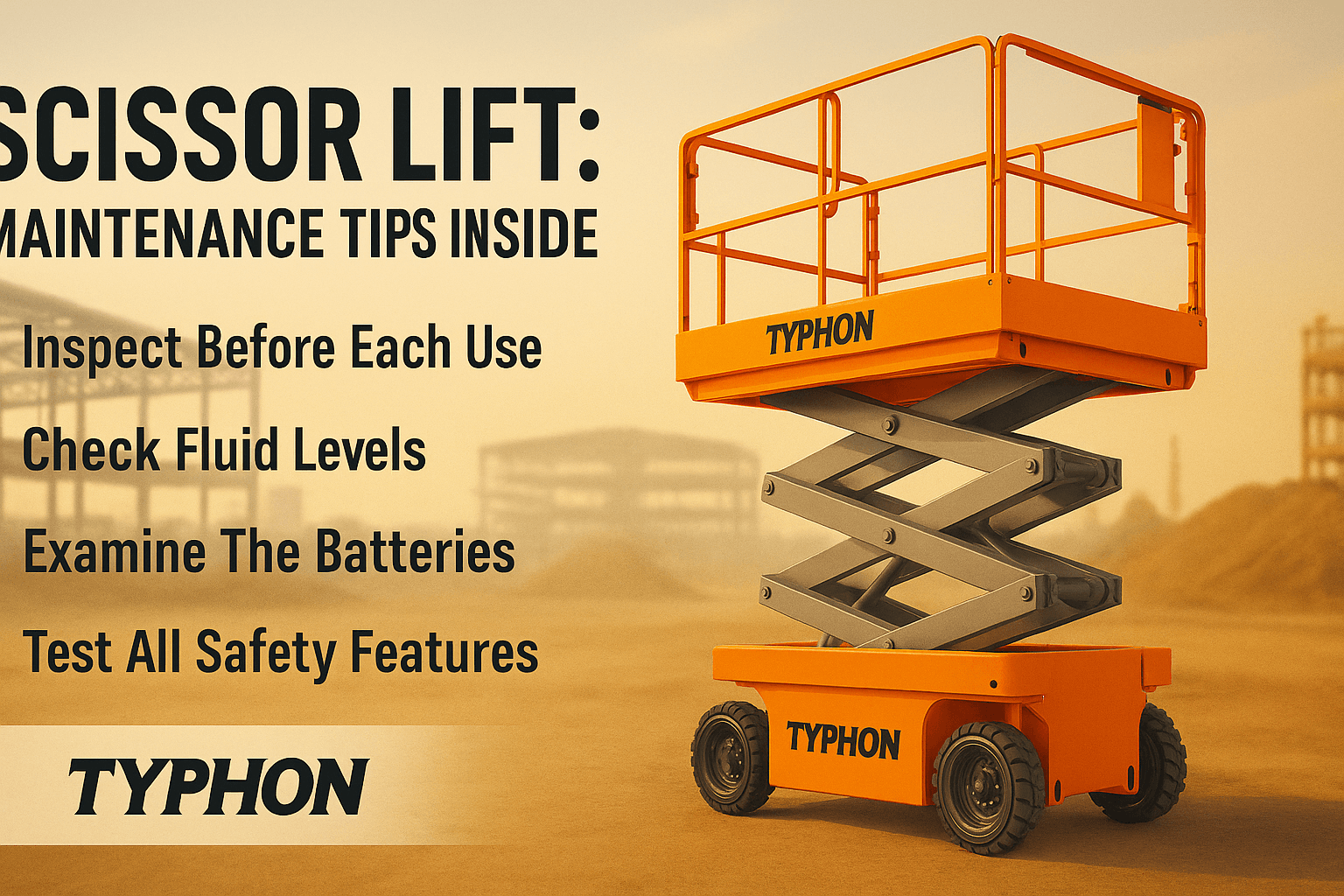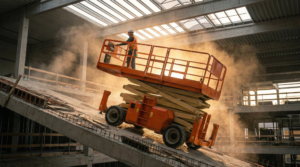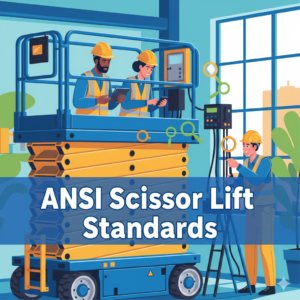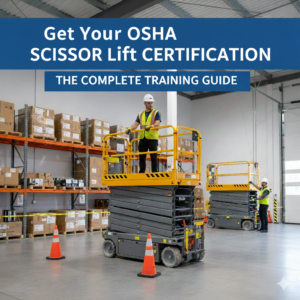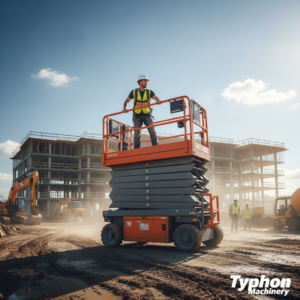5 Signs It’s Time to Replace Your Scissor Lift: Maintenance Tips Inside
There are almost no industries that Scissor Lifts aren’t indispensable in-from construction and warehousing through facility management to retail. They guarantee a safe and quick way to get to the heights, increasing productivity and letting you work on tasks that were dangerous or impossible without such a machine.
In addition, as with every piece of heavy machinery, the lifespan of the scissor lift is limited. The knowledge whether to replace or repair a scissor lift is extremely important as regards safety, efficiency, and costs.
The maintenance team is the group that, by failing to respond to alerts, puts the company at considerable risk; increased downtimes contribute to spending more on emergency repairs, which in turn lead to the most crucial issue-unsafe working conditions for the Operating Engineers.
Let’s discus the outline of the five highest signs indicating that it’s about time to buy a new scissor lift but will also contain some maintenance tips that are going to be helpful in extending the life of both your present and future equipment.
5 Telltale Signs Your Scissor Lift Needs Replacement
The presence of these signs earlier on may be the intervention needed to prevent your ordeal from worsening and leading to accidents.
- Frequent and Increasingly Costly Repairs
Among the easiest to find is when the repair situation is becoming frequent and pricy. It is quite normal to go for occasional maintenance but if the scissor lift is often kept aside inoperable while the maintenance frequency is going up and the bills are piling it’s a clear sign that the basic parts of the lift are deteriorating.
- Ask yourself: Are your repair costs added together more than a large part of the new equipment price? Have you calculated that the downtimes incurred are delaying project deadlines and causing financial losses? In this case, repair expenses plus profits lost may well exceed the purchase of a safe, brand-new scissor lift.
- Visible Wear, Tear, and Structural Damage
An inspection based on what your eyes can perceive can provide quite a bit of information about the welfare of your scissor lift. Look for the following signs:
- Corrosion and Rust: Especially on pins, welds, and other critical structural components.
- Cracks in the Chassis or Platform: Such fractures can significantly weaken the lift.
- Bent or Damaged Scissor Arms: This would have been a result of the overloading and/or impact.
- Worn-out Tires/Wheels: That, in turn, are harmful to the lift’s stability and movability.
- Leaking Hydraulic Fluid: One of the frequent troubles, yet the persistence of the leakage even after fixing actions might be an indication of problems of a serious nature.
A major structural defect can be a strong indication of a variety of safety hazards and usually demands replacing the equipment, which could be both the safest and the most economic option.
- Outdated Safety Features & Non-Compliance
For the sake of the safety of workers, safety standards and regulations for Mobile Elevating Work Platforms (MEWPs), as well as scissor lifts, are constantly undergoing change and development. For example, some older models may not be equipped with today’s cutting-edge safety features or may have become obsolete due to changes in the legal regulations (e.g., the US has adopted new standards set by ANSI or OSHA).
Key Safety Features to Check:
- Pothole protection systems
- Load sensing systems
- Emergency lowering mechanisms
- Guardrail integrity and gate functionality
- Up-to-date control systems
To alter the characteristics of an old machine in order to meet new standards may cost a lot and sometimes be even more impossible than it will be expensive. With a new scissor lift, you will get a lift having the most current safety technology installed on it, and the direction of its use will be in compliance and safe.
- Reduced Performance and Efficiency
Does your scissor lift exhibit a problem of being unable to extend upto full height? Is your device too slow in the ascent or descent? Is the wireless (electric) energy capacity draining rapidly? or the motor (if diesel/gas) is underpowered?
These issues not only may see a significant decrease in productivity but are likely the primary cause of it. To be specific, they could be owing to the following reasons:
- Hydraulic System Wear Out: Pressure or flow reduction.
- Old Battery or Engine: Decrease in power capacity and output.
- Defective Electrical Motors: Impacting vehicle movement speed and agility.
Certain parts can be removed and replaced; however, generally lower performance often means that the machine is closer to being obsolete and worn-out.
- The Absence of Parts and the Lack of Support from Manufacturers
Like people, scissor lifts also grow old, and it’s not unusual for manufacturers to stop producing parts as time goes on. Looking for and buying specific replacement parts can become your chores: time-consuming and costly. In addition, a reliance on cheap or secondhand parts certainly puts an individual in danger by ensuring less safety and reliability.
- When all through the previous steps you still find that it’s an irritating task to get the spares, you can also check if the manufacturer has discontinued the product that you own. If your lift becomes “extinct” by means of the replacement part with no other option of becoming available, it makes sense to shift the focus to a newer model with available tons and parts.
Regular Servicing: A Way to Both Safety and Performance
Neither the most well-made nor the most expensive scissor lift can work forever without being replaced due to wear and tear; however, by performing regular maintenance, an average life, etc.
How can a scissor lift be maintained to be reliable and safe?
- Daily pre-use inspections: Before using a scissor lift, the operators should see that it is okay to do so. This, of course, involves confirming that the machine’s fluids, tires, controls, safety features (like alarms and emergency stops), etc. are fine and looking for any visible damage or leaks.
- Regular scheduled maintenance: Stick to the maker’s maintenance schedule. This usually involves: Lubrication: It is important to apply grease to the pivot points, bearings, and parts of the machine that move the most in order to lower the friction and wear.
- Hydraulic System Care: You should always check the hydraulic fluid levels and filters. It is necessary to look for leaks or damage when you are inspecting the hoses and connections.
- Battery maintenance: Check that the batteries are charged, watered (if required), and that terminals are clean and tight.
- Engine care: Change the oil regularly, replace the filters, and make checks on the cooling and exhaust systems.
- Tire and Wheel Checks: Check if the tires have worn out, if they are in good condition, and if they are properly inflated (if they are pneumatic).
- Lubrication: As proper greasing is needed on all the pivot points, bearings, and moving parts to decrease the friction and wear, one should ensure it.
- Hydraulic System Care: The hydraulic fluid levels and filters have to be checked on a regular basis.
- Battery Maintenance (for electric lifts): The batteries must be charged properly, be watered (if necessary), the terminals have to be clean and tight.
- Engine Care (for combustion engine lifts): It is a must to change the oil regularly, replace the filters, and perform the checks on the cooling and exhaust systems.
- Check the tire and wheel: Look for wear, damage, and if it is gas-filled, check whether the inflation is proper.
- Professional Annual Inspections: Your scissor lift should be given a thorough check by a licensed repairman at least once a year, or as per local rules. This kind of inspection is very detailed and can reveal any issues before they become major.
- Training of Qualified Operators: It is of maximum importance that your workers are all well trained and certified for the model of the scissor lift. A thing is that the trained professionals will follow the working patterns strictly, identify a problem on time in time and avoid doing something that can lead to damage.
- Documenting: For all inspections, maintenance, and repairs, you should always keep necessary well-organized records. In this way, the history of the machine can be easily traced and recurring problems can be easily identified.
- Clean Environment: Not only the appearance of the scissor lift will be improved by keeping your scissor lift clean but you will also be in a good position to check for leakages, cracks, and other possible issues.
Deciding the Best Course of Action
Replacing a scissor lift is definitely challenging, but it is also a major investment. However, another way of looking at the situation is that operating an old, broken, or unsafe machine can cost you even more in the future through constant repairs, unmet deadlines, and maybe even casualties.
The early detection mentioned and continuous maintenance activities definitely will place you in a better position to pick the right option that keeps safety, productivity, and the financial stability of your operations in mind. If it happens that you have observed several of the warning signs above, it’s most certainly the right time to talk to some experts and consider the purchase of a new scissor lift which will be the most suitable for your current and future needs.

